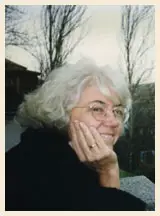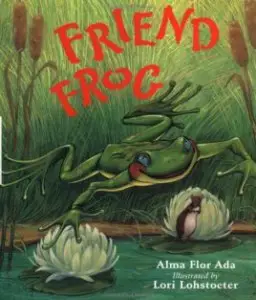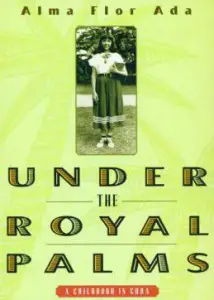 Alma Flor Ada is a Latina award-winning author of numerous children’s books of poetry, narrative, folklore and non-fiction. She was born in 1938 in Camagüey, Cuba. She now lives and writes in the United States in San Rafael, California. In this interview, Alma Flor talks about her books, her love for fairytales and folktales, reading and writing.
Alma Flor Ada is a Latina award-winning author of numerous children’s books of poetry, narrative, folklore and non-fiction. She was born in 1938 in Camagüey, Cuba. She now lives and writes in the United States in San Rafael, California. In this interview, Alma Flor talks about her books, her love for fairytales and folktales, reading and writing.
Voicu Mihnea Simandan: You have been a story writer for most of your life. How has your writing evolved over time?
Alma Flor Ada: I started writing as a literary critic, as part of my doctoral research and continued writing educational materials as a High School teacher. When I started writing children’s books at the request of my daughter I did not believe I have the capacity, imagination or humor, to write for children. So all my initial books were retelling of the folktales and fairytales I had enjoyed in my childhood. The fact that children liked my version and recognized my style of retelling kept me going. One day, several years and many books later, an original story found its way to my imagination. Poetry came later, again shyly. I have always had great respect for poetry and was intimidated even to try. But when some of my initial poems were put to music by the excellent composer and singer, Suni Paz, I felt the confidence to continue.
VMS: You have made extensive use of fairytales and folktales in your books for children? Why fairytales?
AFA: They were a very important part of my own childhood and because I loved them so I wanted to retell them first for my own children, and later for all children. A few of my own original stories have the flavor of fairytales: I have constantly to clarify that The Malachite Palace, Jordi’s Star, The Unicorn of the West and The Gold Coin are original stories, they belong to the genre known as original fairytales.
VMS: Illustrations are a very important factor in any children’s books. Most of your books for children are poignantly illustrated by various artists. What was your work relationship with the illustrators?
AFA: Each one has been unique. I did not know Viví Escrivá when she was contracted to illustrate my 12 books series Stories the Year ‘round and 4 of the books of Stories for the Telling. I never saw the art until it was finished, but I loved her work so much I made a point to visit her in Spain to get to know her. This led to a lasting friendship. In some of the most recent books, co-authored with Isabel Campoy, Pio Peep!, MooMuu, Merry Navidad, Isabel and I have been able to share our ideas for the illustrations with Viví. A similar situation happened with Leslie Tryon. After she illustrated Dear Peter Rabbit the first of the four books in the Hidden Forest series we became good friends. We have had the opportunity to present in conferences together. I have also been able to become a friend of Simón Silva, illustrator of Gathering the Sun and Neil Waldman, who illustrated The Gold Coin. Ulises Wensell, illustrator of a recent book co-authored with Isabel Campoy, Ten Little Puppies has been a very good friend for many many years. Unfortunately I have not had the opportunity to meet some of the other wonderful illustrators of my books.
 VMS: You have started as a non-fiction writer but have moved on to author children’s books. How did you find the transition?
VMS: You have started as a non-fiction writer but have moved on to author children’s books. How did you find the transition?
AFA: I have always lived a very rich life where, for many years, teaching has been my primary activity. I was concurrently teaching doctoral students and directing their dissertations, visiting schools, giving presentations to teachers and educational administrators and writing for children. All these things have happened very much simultaneously with not a real transition. I have always thought of myself as someone learning to become a good teacher and one day I found myself recognized as an author of children’s books. Just as I have always been learning to be a good mother to my four children and one day found me grandmother of nine. To me it all seems kind of organic.
VMS: You have written across a wide range of genres and for different age groups. Do you employ similar skills when writing books targeted for an older readership?
AFA: I was educated as a literary critic and have the highest regards for the writing techniques. Yet, I must confess when it comes to writing I am very much autodidactic. I have never taken a single class on the art of writing. I guess I learned to write by reading extensively. And just as I read very eclectically and enjoy different genres and styles in different ways I write from different perspectives, usually having in mind more the story or the poems than the readers. Once the work is done it determines who will be its readership.
VMS: Some people believe that children no longer read and, with the availability of affordable e-readers, many believe that, sooner or later, children will no longer want to hold books in their hands. Please comment.
AFA: Having enjoyed for so long the magic of books, I sincerely hope this will not be the case. Yet, even if the media changes, a well told story and an inspiring poem should prevail even if read on a screen. Let’s not forget books have been written on bricks, on tree bark, on papyrus scrolls, on parchment and yet the words have survived through centuries. If children feel comfortable with ebooks that will be fine, as long as the quality of the text remains. I have just spent many hours recording the twelve books of my series Stories the Ýear ‘round, in two languages, 24 books in total, that will be produced both as regular ebooks and as interactive ebooks, read by the author. And I am scheduled to do many more recordings. Some of my books already exist as ebooks for example Dancing Home and My Name is Maria Isabel.
 VMS: You maintain an excellent website. How important is it for writers these days to be “out there” on the Internet, interacting with their fans?
VMS: You maintain an excellent website. How important is it for writers these days to be “out there” on the Internet, interacting with their fans?
AFA: It brings me a great deal of satisfaction that readers can get information about me and also contact me directly through my website. To me it has always been important to answer questions from students and teachers and read their comments to my work. The internet has made this far easier.
VMS: You’ve been on quite a few school visits. What were some of the highlights of these visits?
AFA: Meeting students and teachers who have read my books and hearing what they have to say.
VMS: Do you still read children’s books and young adult fiction?
AFA: Absolutely. They are a great pleasure and a source of inspiration, not necessarily for my writing, but for life in general.
VMS: What book are you working on right now?
AFA: A book with Isabel Campoy. It is a combination of poetry and non-fiction about Latinos, showcasing the very diverse people living in the United States who are connected by a common linguistic and cultural heritage.
VMS: What is your writing routine?
AFA: None. I never have two similar days. I write all the time, when and where I can.
VMS: What advice would you give to aspiring writers?
AFA: Read, discover what you enjoy and read. And trust in yourself. It’s your own personal voice, that unique voice that belongs only to you, that is important.
VMS: Thank you for your time.
AFA: Thank for you this opportunity to share ideas with you and your readers.
All my best wishes to all who read these pages. Please, visit me at www.almaflorada.com .
Listen to Alma Flor talk about her life and books:
Voicu Mihnea Simandan
Bangkok, Thailand
October 31, 2011

I was fascinated when I received an email inviting me to be interview for a Romanian writer in Thailand, it shows how truly global our world has become. I enjoyed answering Voicu Mihnea Simandan very well-thought out questions. I have found that many times readers are fascinated by the “stories behind the stories”. When Libraries Unlimited asked me to write the two volumes of Alma Flor Ada and You precisely to tell the stories behind my books I ended up discovering many insights about my own inspiration and motivation to write. Even the simplest of books had some reason and some special hidden meaning. I have shared some of that in the pages I dedicate to each of my books in my website, so if you are interested in learning more of the “stories behind the stories” now you have the sources to find them. Of course, I would always be happy to answer any specific question if you write to me at my website. http://www.almaflorada.com
All best wishes to all who read this post. And my thanks to Voicu Mihnea Simandan.
Thank you for your wonderful answers, too.
what year did you write the Gold Coin.
love,Bob